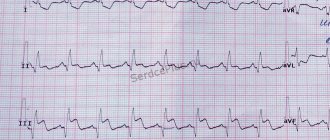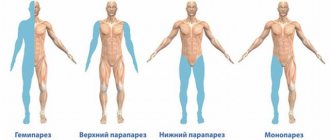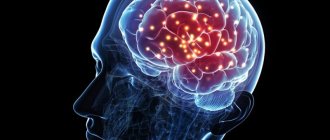The group of diseases of the cardiovascular system represents a wide range of pathologies. Each problem, depending on its location, causes different symptoms and complications. Dilatation of the chambers of the heart, that is, their expansion, is a fairly common problem. This cardiac disease occurs for many reasons and manifests itself in different ways, with one of its most common forms being dilatation of the left ventricle. Since it is from this part of the heart that a large circle of blood circulation begins, providing nutrients and oxygen to many organs and tissues, disruption of its functioning is fraught with dangerous consequences.
Types of dilatation of the ventricles of the heart
Ventricular dilatation can occur as a result of several factors. Depending on the mechanism of development of the pathology, it is customary to distinguish between two types of expansion:
- Tonogenic dilatation is formed as a result of overload of the myocardium with blood volume or pressure. This type of disease often occurs with arterial hypertension, as well as with congenital or acquired heart defects. Dilatation can also develop in the right ventricle, but more often it forms on the left due to the greater workload of the blood circulation that begins here. Atrial enlargement is often accompanied by a decrease in the contractility of the entire myocardium on this side.
- Myogenic dilatation occurs when the pathological focus is localized directly in the heart muscle. Infectious and invasive, as well as inflammatory diseases of the organ often lead to inhibition of myocardial function.
Why does the right and left sections, ventricles, cavities, chambers change?
Changes in each part of the heart occur due to disruption of the outflow pathways from it or increased load on the incoming increased volume of blood.
Left atrium dilatation
Expansion of the cavity can occur when the left atrioventricular opening is narrowed, impeding the passage of blood into the ventricle.
Increased intake due to arterial hypertension may subsequently increase wall stretching.
Left ventricular dilatation
The causes of increased left ventricular volume are associated with the following diseases:
- arterial hypertension,
- stenosis or coarctation of the aorta,
- alcohol abuse,
- myocardial changes - dystrophy, metabolic disorders, autoimmune and viral myocarditis.
Right atrium dilatation
Most often, the etiological factor is diseases of the bronchi and lung tissue, occurring with chronic obstruction (difficulty in patency). In addition, enlargement of the right atrium can be caused by:
- unclosed duct of Botallus,
- vices of Fallot,
- atrial septal defect,
- narrowing of the pulmonary trunk,
- valve insufficiency or narrowing of the opening between the right parts of the heart.
Right ventricular dilatation
Occurs with pulmonary hypertension, a hole in the interventricular septum, narrowing of the pulmonary artery, damage to the valves of the right heart, a heart attack that has spread to the right ventricle, prolonged cardiac stimulation.
Main reasons
Dilatation of the left ventricle can occur as a result of many factors. The most common triggers for the development of pathology are:
- Arterial hypertension is one of the main etiological factors for the expansion of various chambers of the heart. The left ventricle is especially often affected, from which the blood is ejected first into the aorta and then spread throughout the systemic circulation. Arteries, in the presence of hypertension, seriously impede the work of the heart, causing the myocardium to contract more strongly. Initially, this may lead to the development of compensatory hypertrophy of the left ventricular muscles. However, over time, the myocardium begins to gradually stretch, which leads to the formation of stable dilatation and a decrease in its contractility.
- Coronary heart disease is a pathological condition that occurs when the blood supply is disrupted, which is characterized by a gradual decrease in the performance of the organ. The myocardium is nourished by the coronary arteries passing through it. When they spasm, atherosclerosis and impaired microcirculation, oxygen starvation of the tissues occurs and the muscles stop contracting normally. Arrhythmias, ventricular dilatation, and heart failure develop. This pathology is extremely dangerous because it is a prerequisite for the development of myocardial infarction.
- Congenital or acquired heart defects are also considered one of the main causes of ventricular enlargement. Stenosis of the valve or aortic orifice plays a key role in the development of dilatation of the left chambers. The narrowing of the artery lumen increases the load on the myocardium, which gradually stretches, leading to heart failure. Dilatation of the left ventricle in a child is a sign of a congenital cardiac defect.
- Inflammatory heart diseases that occur against the background of infections or invasions lead to the development of ventricular dilatation. Myocarditis of various origins changes the normal structure of muscles, which can lead to persistent impairment of their functions. The walls of the heart lose their inherent elasticity and stretch.
- Idiopathic dilated cardiomyopathy is one of the types of ventricular dilatation, the cause of which is currently unknown.
It is extremely important to establish the etiological factor in the development of the disease, since this affects the prognosis and further treatment tactics.
Diseases leading to changes
Dilatation of the chambers of the heart may occur for an unknown reason. In this case, it is called idiopathic. Among the most common diseases of dilation are the following:
- congenital heart defects;
- rheumatism;
- bacterial endocarditis;
- viral infections;
- violation of immune defense, autoimmune processes;
- hypertension;
- intoxication with alcohol, drugs, toxic compounds, medications;
- hormone imbalance;
- deficiency of protein and B vitamins, selenium in the diet.
Symptoms
The clinical picture of left ventricular dilatation, unfortunately, is not specific. Often, there are no symptoms of the pathology at all and the disease begins to manifest itself only in the later stages of development. Clinical signs of dilatation of the heart chamber are as follows:
- Fatigue and exercise intolerance, developing against the background of decreased cardiac output.
- The occurrence of shortness of breath during the formation of congestion in the pulmonary circulation.
- Cyanotic appearance of visible mucous membranes and skin.
- Swelling of the limbs, especially at the end of the working day.
- Cardiopalmus.
Since in many cases ventricular dilatation does not manifest itself in any way, it is pointless to focus on the clinical signs of the disease. To identify pathology, a comprehensive diagnosis is necessary.
Prevention
Prevention of heart enlargement consists of adequate treatment of rheumatism, endocarditis, viral and bacterial infections, which may be accompanied by myocarditis, identification and timely surgical treatment of congenital and acquired heart defects.
In case of diseases that are potentially dangerous in relation to dilatation of the atria or ventricles, it is necessary to completely abstain from alcohol and ensure a sufficient amount of protein and vitamins in the diet.
Cardiac dilatation occurs when the myocardium is overloaded with excess blood volume or high blood pressure. The condition of the myocardium itself plays a major role in the development of pathology: during dystrophic or prolonged inflammatory processes, muscle fibers weaken, lose contractility and stretch.
Manifestations of heart dilatation include circulatory failure, arrhythmia, and in children there is a delay in growth and development. Medications are used for treatment; severe forms are an indication for heart transplantation.
Source: CardioBook.ru
Diagnostic methods
If you suspect the development of heart disease, you should contact a cardiologist. Based on complaints, examination and auscultation of the patient, a study is performed to confirm dilation of the left ventricle, allowing an accurate diagnosis to be made. For these purposes, doctors use cardiac ultrasound. Ultrasound allows you to visualize changes in valves and walls, see their expansion, and assess the degree of contractility impairment. An ECG is also used as an additional examination, especially if the myogenic nature of the disease is suspected. In the future, the cardiologist recommends a series of tests to determine the underlying cause of dilatation. Various hematological tests are performed, including hormonal tests, x-rays, and examination by specialized doctors.
Treatment and possible complications
Dilatation often causes the development of heart failure and arrhythmia, which are serious diseases that threaten human life. Other complications of this condition include:
- atrial fibrillation;
- thrombosis;
- heart and mitral insufficiency;
- thromboembolism;
- attacks of arrhythmia;
- myocardial infections.
To prevent such consequences from occurring, the pathology should be treated immediately after its diagnosis. This also increases the chances of a full recovery.
A patient diagnosed with left ventricular dilatation requires special treatment. It must be selected based on the cause of the disease. In most cases, drug correction helps restore the patient to health. But there are also situations when pathology triggers irreversible processes in the heart. This may be fibrosis, scarring or sclerosis of the myocardium. In such cases, all that remains is to prevent further left ventricular hypertrophy.
Depending on the situation, the patient may be prescribed the following groups of drugs:
- Anti-ischemic drugs. They reduce myocardial oxygen demand, helping to reduce heart rate and suppress left ventricular contractility. The drug “Sustak” is especially popular in medical practice.
- Diuretics. They have a diuretic effect and help lower blood pressure by removing excess water and salt from the body. They significantly reduce the load on the heart muscle, which is caused by excess fluid in the body. Of these, “Hypothiazide” and “Indapamide” can be distinguished.
- Cardiac glycosides. They belong to the group of herbal medicines. They are distinguished by antiarrhythmic and cardiotonic properties, which is why they are widely used in the treatment of cardiac pathologies. Their use improves the performance of the myocardium, resulting in efficient and economical heart activity. The most common drugs in this group are Korglykon and Digoxin.
- Anticoagulants. These drugs improve blood properties, inhibit the activity of the coagulation system, and prevent the formation of blood clots. They are represented by such medications as Curantil and Plavix.
- Antihypertensive drugs. Their main effect is aimed at lowering blood pressure. These drugs are prescribed in the presence of arterial hypertension. Most often, doctors recommend taking Enalapril, Losartan or Captopril.
- Antiarrhythmic drugs. The need for these drugs arises in cases of ischemic disease, heart attack, myocarditis, heart defects, and cardiosclerosis. They serve to stabilize the heart rhythm. Among them, it is worth highlighting “Adenosine”, “Prazosin” and “Metoprolol”.
If there is no desired effect after the completed course of medication, the patient may be indicated for surgical treatment. Dilatation is corrected by heart transplantation or insertion of a pacemaker.
For any heart disease, treatment must be combined with diet. The first step is to remove fatty, fried and other unhealthy foods from your diet. You also need to limit your salt intake. It is very important to drink enough water (1.5-2 liters per day).
Timely drug therapy, a healthy lifestyle and proper nutrition can significantly improve the patient’s condition. All this gives a person a chance for a complete recovery and excellent health.
Source: MirKardio.ru











